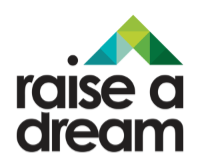This is not a new approach.
More than 20 years ago (before I opened my businesses), I was a contract negotiation specialist for the government. I had a portfolio of funding that was provided to nonprofit organizations, for-profit businesses, and community groups to operate programs and services in the region. The funds supported a wide range of initiatives including early childhood education, parenting programs, community events, group homes, and women’s shelters to name a few.
More...
Criteria for Funding Consideration
Some of the factors in funding decision-making that we considered (and could be very helpful for you to consider on your projects) was:
- Is the organization (sponsorship/funding seeker) demonstrating how they are collaborating or partnering with others and reducing duplication?
- Has the funding/sponsor engaged other partners, champions and collaborations?
- Did the organization address the collaborations / partnerships they hold in the community (e.g. on other projects) and what they have done to improve efficiencies?
Examples of How Projects and Businesses Can Collaborate
#1: Sharing Resources and Space
In one program, I recall that a youth mental health program requested minimal administrative dollars. This was something we queried in the interview with their leaders as the amount in the proposal was much less than we would typically see in a proposal. The organization stated that they had partnered with the business next door to:
- Do all their photocopying (in-kind sponsorship arrangement)
- Have space for the programs being donated by community partners (other community organizations)
- Have sign-ups and registrations available at the business next door (which allowed the organization to reduce their office hour needs and extend direct programming to youth).
#2: Sharing Personnel
Another organization showed how they were sharing an administrative assistant and an HR consultant through an interagency collaboration agreement which reduced administrative costs to extend funding to support more clients/initiatives.
#3: Coordinating Processes and Efforts
In another example, there were two organizations who accepted donations (e.g. clothing, household items, etc.); however, the smaller of the two organizations had very specific needs (no household items, women’s clothing only), so they partnered to have drop-offs to the larger organization who then did the sorting and provided some of the women’s clothing and household items to the smaller organization. This reduced the need for both organizations to compete for the same funding and volunteers (for storage and sorting). This collaboration opened up doors for both organizations to explore other ways to work together.
Now you might be saying, “These programs and services are not anything like what I do and who I serve”.
I get it; however, these concepts are relevant and transferable across many sectors, projects, and models. Funders are looking to create greater impact and leverage their available dollars. The more creativity, collaboration, and impact you can provide, the better chance you have at securing funds.
Sponsorship Essentials
Learn the 7 Essential Steps to Funding Your Dream Projects with Sponsorship.




0 comments